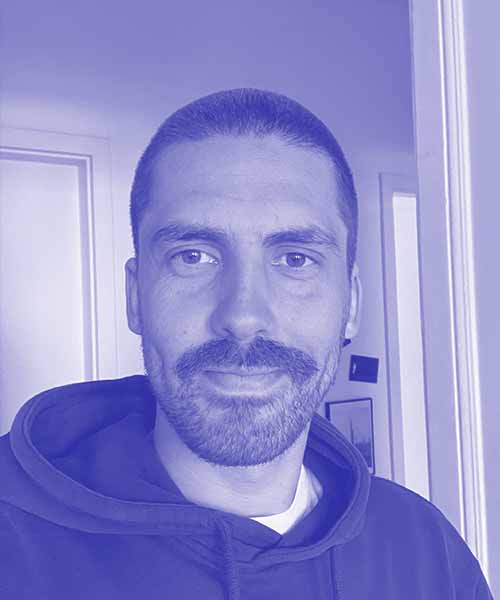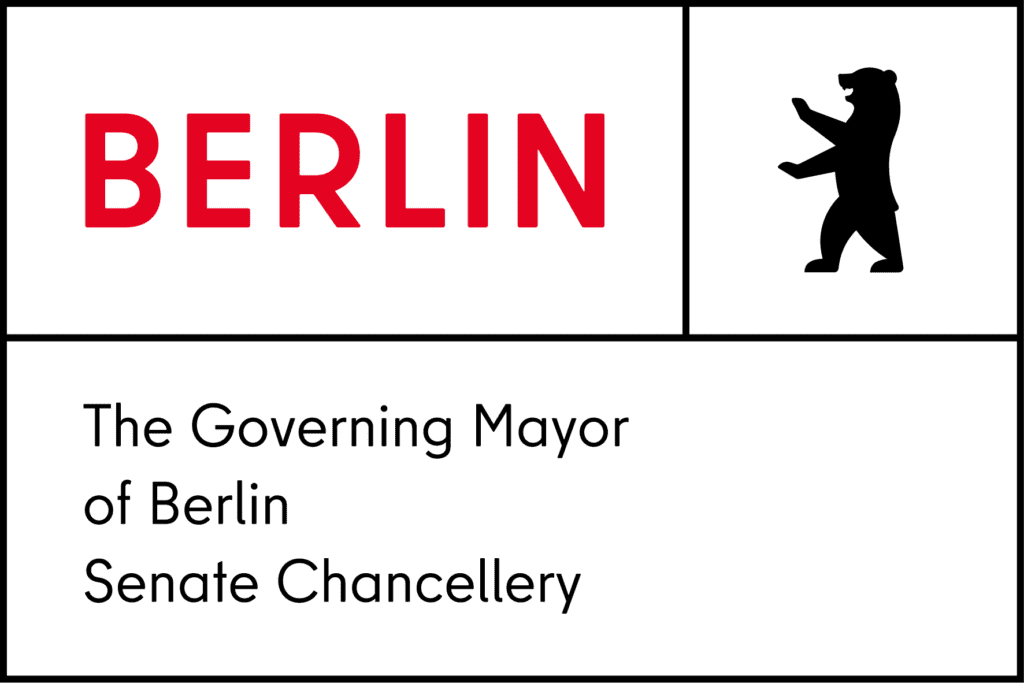As a public innovation laboratory, we at CityLAB aim to continuously engage with current trends and developments in public digitalisation in order to not only keep pace with change, but to actively help shape it. In addition to our actual projects, we therefore regularly carry out exploratory deep dives in which we delve deep into individual subject areas. These explorations not only serve to expand our knowledge, but also to strengthen transdisciplinary collaboration: for each exploration phase, we put together new, cross-functional teams that dedicate themselves to a topic for a limited period of time in order to understand existing challenges and develop solutions. We would like to share the results and findings of some of these learning journeys with you in this collective interview.
Topic 1: Route planner for the document safari
Numerous documents have to be filled out when it comes to implementing an IT process in the Berlin administration, and for a lot of administrative staff it’s not easy to stay on top of things. So our first focus team wanted to find out what these documents actually are and what possibilities there might be to simplify this process. Markus Sperl, responsible for project development at CityLAB, explains what his team learned.

What was the main problem involved with your focus topic?
Markus: The development of websites and the implementation of tools or new ICT applications in general in an administrative context follows strictly regulated processes. This type of process often means involving various official bodies at an early stage and creating different concepts for such things as data privacy which provide information about the ICT itself as well as the requirements and the necessary preparations for implementation. Since its foundation, CityLAB has not only built up its own wealth of knowledge about standards and guidelines for the introduction of digital applications: through dialog with the administration it has also identified that there is persistent confusion regarding this process. Which documents do I need for which type of application that is to be implemented? How do I correctly categorize the application I have in mind? What is the correct sequence for involving different bodies in connection with this type of implementation or development? What requirements does the application have to meet? When exactly does the main personnel council have to be involved in the decision-making process – and when doesn’t it have to be involved? Although answers to these questions are available and can be found, the process is still so complex that not all employees seem to be equally knowledgeable about it over and above their regular duties. Yet the idea is that this shouldn’t be a factor inhibiting the will to change or innovate. By providing a clear presentation, we wanted to provide help and guidance both for our own employees and for administrative staff who are further removed from digitalization.
How did you go about finding a solution?
Markus: We tried to present all the knowledge gathered over the last few years through our software and web development projects with and for the Berlin administration in a single place. This still incomplete picture was then compared with several interviews with experts in the administration. From one conversation to the next, an increasingly complete but no less complex picture emerged.
One possible way of presenting the information that we had in mind was to create a kind of flow chart which schematically outlines the introduction process for new software/ICT applications, also with various branches – from the problem identified through to live operation, with instructions for creating the necessary documents. We designed a simple prototype for this, which was then also implemented as a click dummy. Since the process ultimately eluded this simple representation, however, we decided to present the results in text form.
What was the result of your collaboration?
Markus: We were certainly able to see how different qualities and perspectives come together in the interdisciplinary teams and how enriching that can be! Our results are now available to the entire CityLAB team in the form of a checklist-like report. While the initial impetus of our exploration was to find out more about the concepts to be submitted and how to create them, as a team we learned a lot about the whole process of introducing ICT in the administration – especially about the roles of the different bodies that have to be involved, such as the main personnel council. At the same time, we now have a much better idea of which categories of ICT application exist and which category our prototypes fall into. We can now build on this knowledge in order to be able to talk to the controlling bodies about adapting or modifying these specifications and about the possibilities and limitations of perpetuating our own web prototypes.
Topic 2: Tender for an IT project
Tendering for an IT project often involves a number of hurdles – including writing a correct service description or setting realistic requirements for a service: many things can turn out to be an obstacle in this extremely complex process. We tried to understand the public procurement process in more detail to find out how it could be simplified for administrative staff. Our director’s personal advisor Jenny Huang reports from her team.

What was the main problem involved with your challenge?
Jenny: In the past, CityLAB has repeatedly been asked by various stakeholder groups to act as a mediator on the topic of innovation in IT procurement. Since there is no central procurement office in Berlin and the procurement processes are sometimes carried out in very different ways depending on the district, the first major challenge was to understand the differing requirements, needs and hurdles of individual stakeholder groups. The aim of our group was to use best-practice examples to map out a standardized procurement process that would serve as a starting point for identifying possible areas of action and ideas for solutions.
How did you go about finding a solution?
Jenny: In view of the different processes involved in awarding contracts in Berlin, it was important to us to start out by understanding and recording the different players and needs by way of an exploration phase. Equipped with the methods from our Public Service Design manual, we then took a closer look at the topic of innovative procurement based on the first three phases of an innovation process:
- In the preparatory phase, fundamental questions on the topic of procurement were clarified, which helped us look at the current situation and identify relevant stakeholders.
- In the subsequent exploratory phase, we critically questioned our assumptions based on extensive written research and discussions in the form of focus groups and group workshops held with the stakeholders we had identified.
- Together with workshop participants, we then translated the knowledge we’d gathered into concrete findings and, building on this, identified potential areas for possible solutions.
What was the result of your collaboration?
Jenny: Breaking down internal structures and working in interdisciplinary teams is not only great fun, it’s also incredibly enriching for collaboration and creates the necessary change of perspective. Within just a few weeks, we were able to identify promising solutions together with administrative staff, and these were illustrated by means of a digital click dummy. The click dummy will hopefully serve as a basis and food for thought in the future as we go on to further develop the digital procurement infrastructure in public administration.
Topic 3: Designing IT processes with low code
How is an administrative procedure actually digitalized? The aim of this focus topic was to analyze and digitalize a so-called “business process” in accordance with the E-Government Act. For this we used the MODUL-F low-code construction kit from Hamburg, since we had been in productive contact with the team there for some time. Creative Prototyper Jonas Jaszkowic explains how his team researched processes and experimented with a prototype.

What was the main problem involved with your challenge?
Jonas: When it comes to digitalizing business processes and specialist procedures, organizations often tend to draw up individual tenders in order to implement them. But this approach entails the risk of frequently “reinventing the wheel” since different specialist procedures have similar requirements, such as user management, document storage and form mailing. What is more, it slows down the process as a whole. The use of low-code platforms offers a promising alternative here. These platforms facilitate implementation and offer standardized solutions. The advantage is that IT-savvy employees can also implement solutions independently, without extensive knowledge of programming.
How did you go about finding a solution?
Jonas: First, the administration did research into low-code platforms already in use. Intense use was made of existing contacts within the administration and interviews were conducted with experts. An independent analysis was carried out looking at the range of functions and user-friendliness (UX) for the most widely used products “Intrexx” and “Modul-F”. A further step involved identifying existing specialist procedures and business processes that could realistically be implemented using one of the two platforms. The specific focus of interest here was the “procedure for taking out insurance when lending out works of art”: the entire target process for this was already mapped in the software Adonis which is used to model business processes.
What was the result of your collaboration?
Jonas: Our results were summarized in a final report that compares available low-code platforms and uses a specialist procedure as an example to show the possibilities and limitations of these platforms. A meeting is planned with the responsible representatives from the Berlin administration in order to present the specialist procedure mapped with Module-F in a joint dialog session and discuss further possible steps for implementation.
Topic 4: Data management
Data is at the heart of administrative digitalization. Yet there is often a lack of appropriate data management and an overall awareness of which data is available and where. Based on the preliminary work done by the Open Data Information Service (ODIS), this team set out to find ways in which administrations can gain a more comprehensive grasp of their data stocks and achieve more efficient networking of this data. Lisa Stubert, Team Lead Open Data, provides more detailed insights into what the team was able to find out.

What was the main problem involved with your challenge?
Lisa:We take the term “data management” to mean processes, tools and methods that are used to collect, store, manage, protect and use data. Good data management is essential in order to make data accessible, understandable and usable, while at the same time ensuring data quality and security. This in turn is crucial when it comes to data-based monitoring and decision-making in administration and politics, in connection with open data, and for presenting and visualizing current information, such as for reporting or by means of dashboards. As such, data management is the basis for a whole range of digitalization projects and administrative innovation projects – and it’s currently proving to be challenging to a lot of authorities in this very context.
What was the main problem involved with your challenge?
Lisa: CityLAB Berlin has explored which pain points are particularly relevant in the area of data management in Berlin’s administrations and to what extent new technical approaches might contribute to a solution. The focus was on the concept of a collaboratively created “data catalog”.
By developing personas and engaging in discussion with administrative staff, we came to the conclusion that a comprehensive and user-friendly data catalog could simplify data management and benefit a variety of user groups – from open data officers to senior management. The data catalog is intended to provide a central, digital overview of data stocks, searchable by keywords and filter options and supplemented with visual analyses such as dashboards for data quality and up-to-dateness, as well as suggestions for data processing and links. In addition, emphasis was given to the need for a collaborative approach which supports sustainable maintenance of the database across authority boundaries based on a roles and rights system and the validation of metadata.
What was the result of your collaboration?
Lisa: Part of the outcome was that expanding the use of cloud storage solutions in administrations is seen to offer potential for easier collaborative working by facilitating the sharing and editing of Excel documents. In terms of more complex requirements, a prototype was developed that combines Excel as a user interface with data in a separate database to enable advanced versioning and a sophisticated rights and roles system. Initial drafts for a data catalog that offers clear data presentation, filtering, searchability and AI-supported search functions are based on previous studies. Summarized in a final report, these outcomes aim to further build on ongoing efforts in data management and data catalogs, especially in the context of the Berlin Open Data Strategy. We’re now looking for feedback on the prototype and partners in the administration who’d like to contribute to the ongoing development of data management solutions.
Intense engagement with these four central topics of administrative digitalization – and especially the fact that were able to engage in personal dialog with administrative staff – not only provided the entire CityLAB team with helpful insights into fundamental processes, it also shed new light on our own work. By working collaboratively in interdisciplinary teams, we were able to gain valuable insights into the complexity and diversity of the digital transformation in administration. These findings will guide us in the future and provide us with practical support when working with the administration, and they offer potential in terms of optimizing standards and processes. The work on our focus topics has once again shown us clearly that a cooperative, creative and open approach is crucial to successfully meeting the challenges of the digital transformation.
